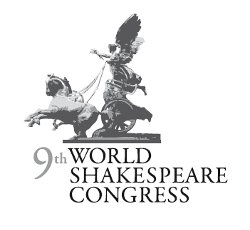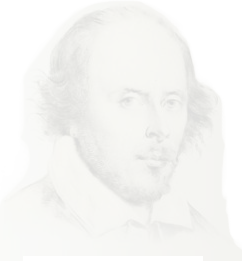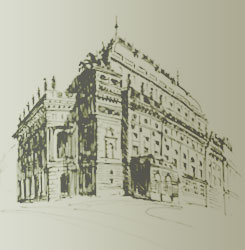Charles University
Website: www.ff.cuni.cz
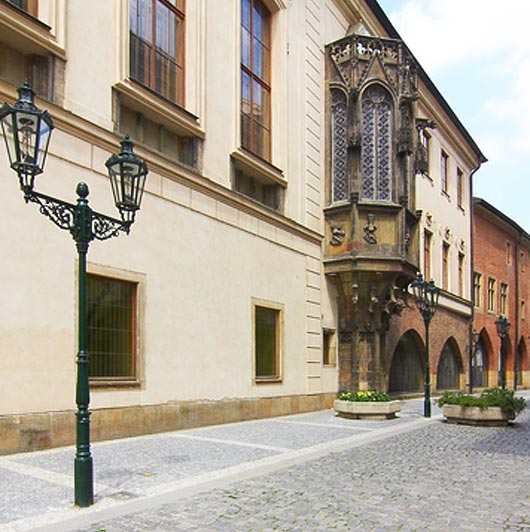
Charles University profile
Charles University in Prague was founded in 1348 and is one of the world's oldest universities. Today it has 17 faculties (14 in Prague, 2 in Hradec Králové and 1 in Plzeň), 3 university institutes, 6 further centres for educational, scientific, research, development and other activities or for provision of information services, 5 university-wide special facilities and the Rectorate as the administrative centre of the whole university.
The university has more than 7,500 employees, 4,000 of these being academic and research staff. Over 51,000 students are studying at CU (which is roughly a sixth of all students in the Czech Republic), in more than 300 accredited degree programmes and 660 study disciplines. More than 18,000 are studying in bachelor's programmes, 25,000 in master's programmes and more than 7,000 in doctoral programmes. Over 6,000 students are from abroad.
Various courses in lifelong learning programmes organised by CU attract more than 15,000 people each year.
The university is dedicated to international co-operation with prestigious educational and research institutions. CU has signed a total of 450 bilateral agreements and 190 international partnership agreements with foreign universities.
Charles University is one of the world's top universities, a fact that has been confirmed repeatedly by the international university rankings. In the Shanghai University's Academic Ranking of World Universities, which evaluates 2,000 universities, Charles University was placed in the top 300 out of the total of 17,000 universities and colleges. Charles University is therefore among the 2% of the best universities and the 100 top European universities. It is the only Czech institution of higher education to be placed in the published list of 500 universities. The university fared just as successfully in The Times THES ranking, being paced 229th.
The status of Charles University can also be characterized by its income, which is roughly 8 billion Czech crowns per year. 45% of this amount comes from educational funding, 29% from competitive research grants, and 26% is its own income.
Charles University is an accredited public university, and so an autonomous scientific and educational establishment. Charles University is headed by a Rector, while the Academic Senate is its supreme self-regulating academic body. Its other organs include the Academic Council and bursar, and the Board of Directors which is responsible for the implementation of public interest in Charles University's policies. The Senate consisting of the prorectors, the bursar and the chancellor make up the advisory body of the rector. The deans are heads of faculties which enjoy a large measure of independence. Other component parts of Charles University are managed by their directors.
History of Charles University
A Czech and Roman king Charles IV founded the Prague university by a deed of foundation on April 7, 1348 as a first university (studium generale) to the north of the Alps and to the east of Paris. The Charles University belongs to old European universities. It followed the example of the Bolognese and the Parisian universities and in a short time became internationally famous. The university consists of four faculties: faculty of theology, of arts, of law, and of medicine. Not only Czech but also many foreign teachers and students were members of the academic community of the university, especially those from Central European areas for whom the university in Prague became accessible and erudite university of studium generale. Charles´s son and successor Wenceslas IV extended his influence on the university and in 1409 strenghtened also the position of the native members of the academic community by a Kutna Hora Decree. A territorial character of the Prague studium generale was emphasized by the protest departure of a part of masters and scholars from the Prague university. Shortly after the Prague university influenced by the Hussite movement preceding the European Reformation changed its character. The university rector, Master Jan Hus, became very influential at the university. In following social and political revolution the university was reduced to one faculty- faculty of arts (artium)- as a prototype of future territorial reformation academies.
He created a cultural metropolis where besides a court center (with scholars Joannes Kepler and Tycho de Brahe)also a university erudition was developing.
At the beginning of the 17th century the University was considerably influenced by political provincial estates which were involved in the antihapsburg opposition whose political representatives stirred up a conflict at the beginning of the first European war ( the Thirty Years´ War in 1618-1648). Their defeat caused a radical change at the university. A victorious Roman emperor and Czech king Ferdinand III amalgamated a Carolingian university and a Jesuit university in Clementinum (whose beginnings go back to 1556) into a university with a new name Charles-Ferdinand University (the name survived until 1918). This university re-established all four faculties which it had consisted of before the Hussite movement and was growing from a former free corporation of intellectuals into a public educational institution and this process was rounded off with reforms of the absolutist regime of the emperor Joseph II in the 1780s.
The university started to grow into a modern university during the reforms in 1848/49. It was gradually changing into a public institute educating a professional intelligentsia class. In 1882, in the period of a high national political movement, the Charles-Ferdinand University in Prague was divided into two universities: Czech and German.
At the turn of the 20th century have both universities reached a high scientific level. At the German university there worked e.g. professor Albert Einstein. At the Czech university there were excellent personalities who played an important part in a state-political emancipation process, especially professor Thomas G. Masaryk who became first president of an independent Czechoslovak Republic in 1918. The Charles University- a name of the Czech university in an independent state- took advantage of new circumstances to develop a scientific research and some of its results achieved a world standards. We should remember the discoveries of professor Jaroslav Heyrovsky in the field of polarography which brought him a Nobel prize in 1959.
The Hitlerian occupation of Czechoslovakia caused a terrible disaster and loss. After student demonstrations on October 28, 1939 and during a funeral of a medical student Jan Opletal were the Czech universities closed down on November 17, 1939, and a persecution of students and university teachers followed.
The Charles University could take up its activity after the World War Two. The German university in Prague which joined the association of Reich universities in 1939 came to an end simultaneously with the Nazi Reich.
Free development of activity at Charles University was interrupted after a communist coup in February 1948. The regime subordinated the education and research to an ideological and political control for a long time, the international relations and the impulses of science were affected. Students loyal to a tradition of liberty principles protested against a totalitarian system on November 17, 1989 and initiated removal of the regime.
Supported by international cooperation a modern university life developed rapidly. The Charles University keeps developing a systematic research cooperation and takes part in both European and international programs.
Charles University - Faculty of Arts
(congress venue)
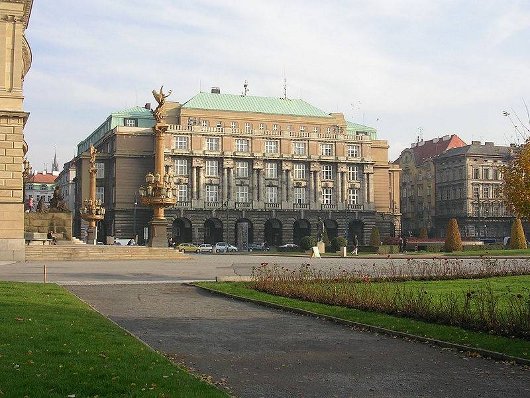
History of the Faculty
The Faculty of Arts at Charles University in Prague is a traditional centre of Czech scholarship. Its prestige is based on an unrivalled number of fields (almost 90 different fields can be studied), on the depth and intensity of study and on its selective character, documented by the fact that thousands of prospective students apply for study at this Faculty every year. Almost 7000 students studied at the Faculty of Arts in 2008. Many former students have become leading personages in the social life of the Czech Republic. The Faculty of Arts provides lectures in the greatest number of fields of the humanities in the Czech Republic and is the only faculty in Europe at which all the languages spoken in the Member States of the European Union can be studied (in various forms). Thanks to its seven hundred leading teachers and scientific workers, this Faculty is the most important Czech educational institution oriented towards the humanities, which constantly presents new and innovative ideas, thus continuing a centuries old tradition of academia.
The Faculty of Arts of Charles University was established as a Faculty of Liberal Arts within the University on the basis of the founding document of Charles IV of April 7, 1348. The ruler thus attempted to make the Kingdom of Bohemia the permanent centre of the Roman Empire and placed great emphasis on the scholarship of the Prague metropolis, where he wanted to concentrate domestic and foreign scholars and thus support the base of power. The University, of which this Faculty was an integral part from the very beginning, represented cultural advancement and substantial social progress in society. Because it was the custom to first attend the Faculty of Liberal Arts, where students initially underwent education primarily in rhetoric and philosophy, this largest faculty became part of the University and, in 1366, Emperor Charles IV endowed the Masters of Liberal Arts with the first Prague college – the Karolinum.
The Faculty of Liberal Arts shaped the profile of the entire spectrum of advanced education, because most scholars at that time completed their study at this Faculty, or it was crucial in determining the level of theoretical knowledge of students entering other faculties of the University. In Pre-Hussite times, the Faculty of Liberal Arts comprised two thirds of all the students at the University and the extent of its influence was certainly the greatest. The privileges of the Faculty included the right to award Master’s or Doctoral titles, which authorized their bearers to teach at any university in Europe.
Following the Hussite wars, the Faculty of Liberal Arts became the nucleus of the whole University for two centuries. From the 17th century, the Faculty was known as the Faculty of Arts and, until the middle of the 19th century, fulfilled the role of a faculty whose program provided preparatory higher education for future students of other faculties, meaning all students had to pass through it. Consequently, its life and influence continued to have a substantial effect on the creation of the traditions of the University and all of Czech scholarship.
From the 18th century, it was possible, in addition to philosophy, to study aesthetic theory, pedagogy, mathematics, astronomy, the natural sciences, engineering sciences, economy and history here. In addition to oriental studies, archaeology and religion, the fields of philology, such as the Czech language, Italian, French, English and Hebrew began to develop substantially in the 19th century. Following the liberalization of teaching in the second half of the 19th century, in 1897 it became possible to also offer women a place at the Faculty of Arts. The best known personages of the Faculty of Arts included, for example, Jan Hus, Bernard Bolzano, Tomáš Garrigue Masaryk, Jaroslav Goll, Jan Mukařovský, Bedřich Hrozný, Josef Pekař, Jan Patočka and Václav Černý.
The important influence and formative character of the Faculty survived the division of the University into Czech and German parts in 1882 and the separation of the Faculty of Natural Sciences in 1920, until the time when the school was closed by the Nazi occupying forces in 1939, which was accompanied by brutal persecution of teachers and students. Following liberation in 1945, the Faculty of Arts experienced a number of fertile years; this was forcibly terminated in 1948 by the onset of the Communist regime, following which the prestige of the school rapidly decreased as a result of the forced departure of dozens of excellent teachers and the introduction of absurd Marxist-Leninist subjects. In the nineteen sixties, the Faculty slowly began to open to prominent personages of the time, but all expectations were destroyed by the Soviet occupation in 1968, against which a student of the Faculty, Jan Palach, protested by self-immolation. Only after the overthrow of the Communist regime and the departure of its compromised exponents in 1989 was the Faculty newly established as one of the most prestigious university institutions in the Czech Republic. Thanks to its almost seven hundred year-old tradition, successful scientific and pedagogical activities and breadth of fields of study, the Faculty of Arts at Charles University is an undoubted authority in Czech society and has an excellent reputation internationally.
View Congress Venues – Shakespeare 2011 in a larger map
